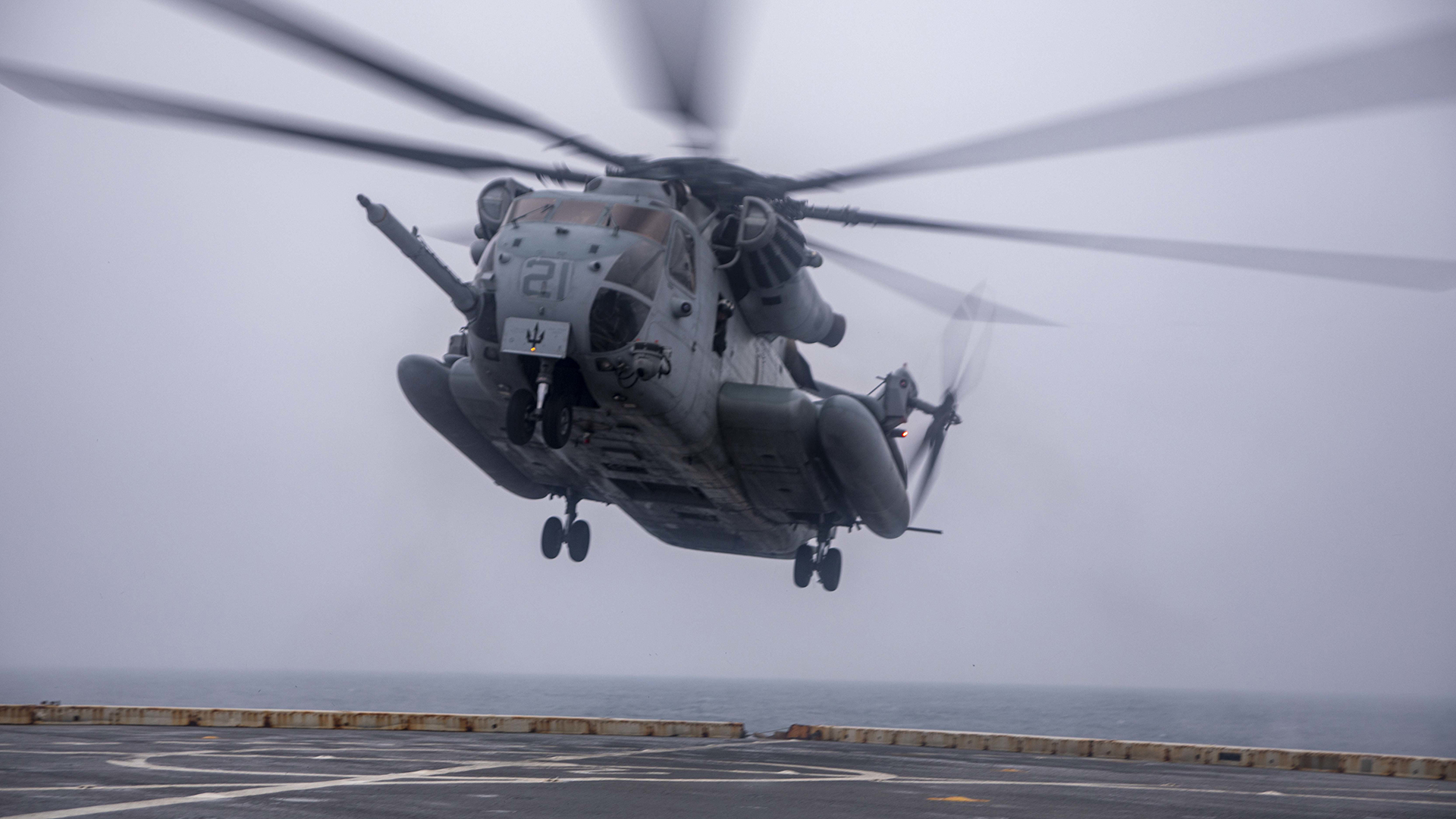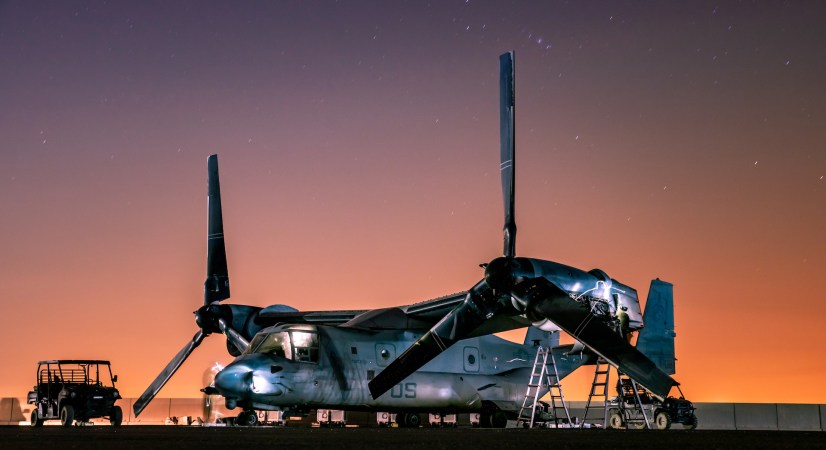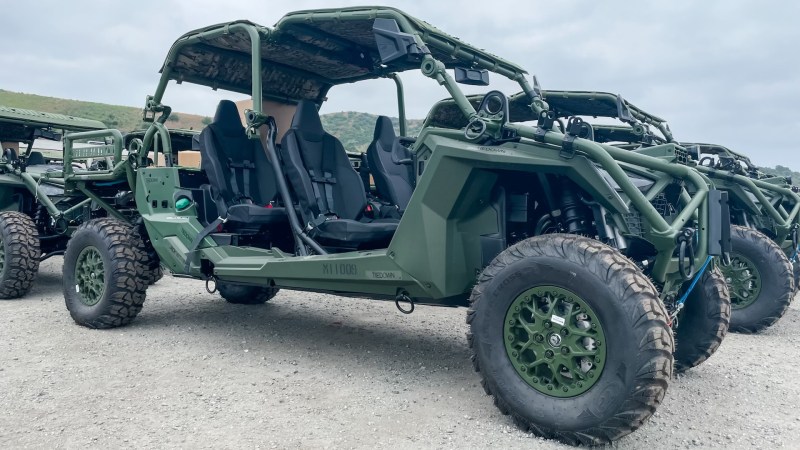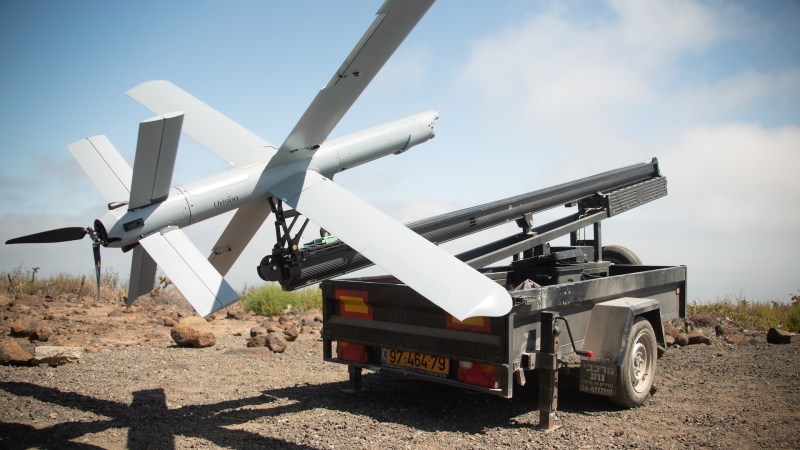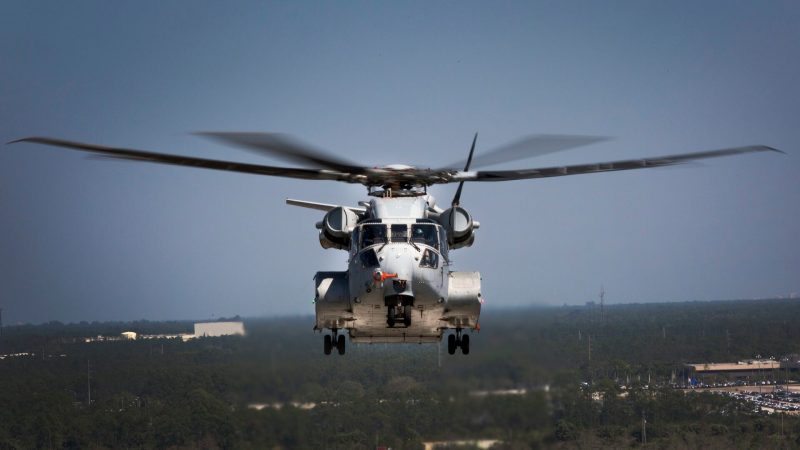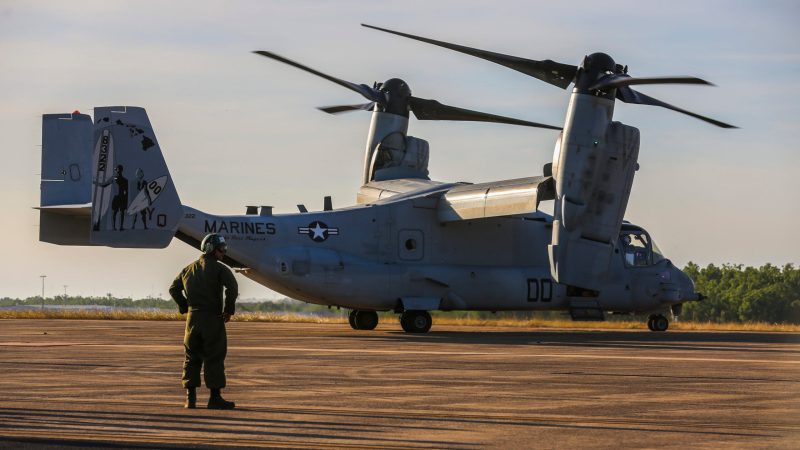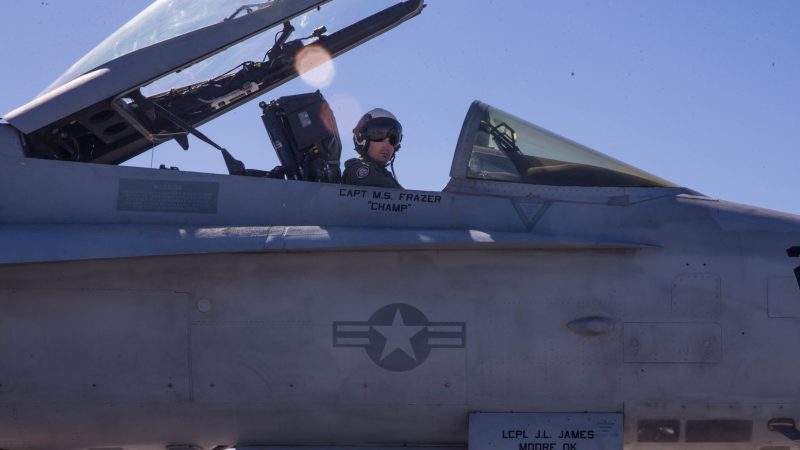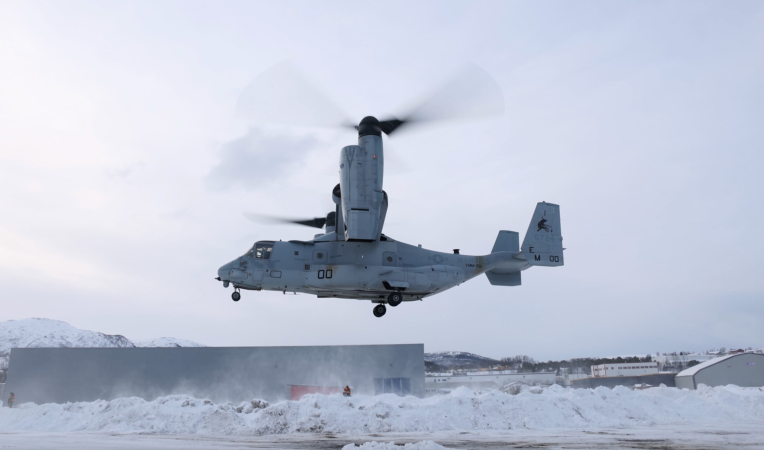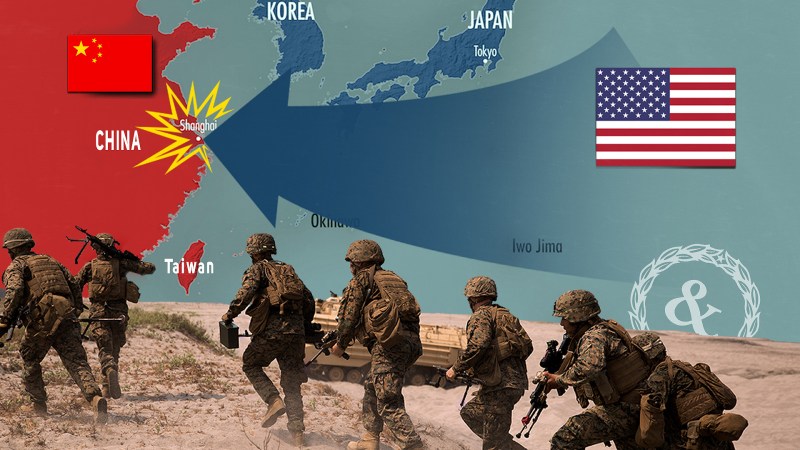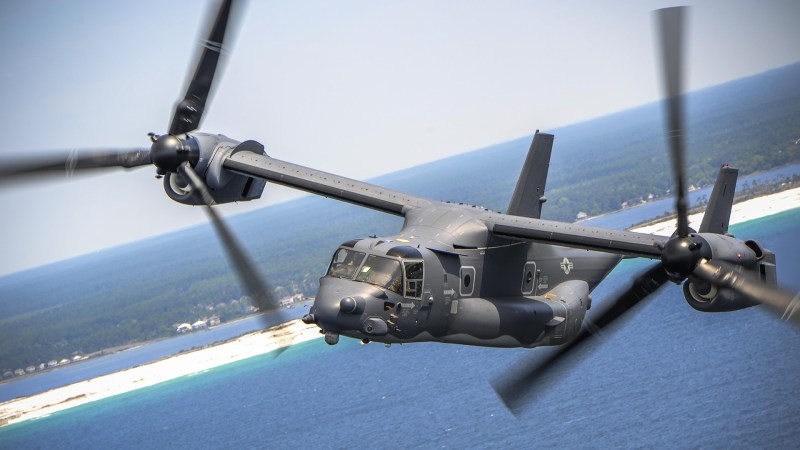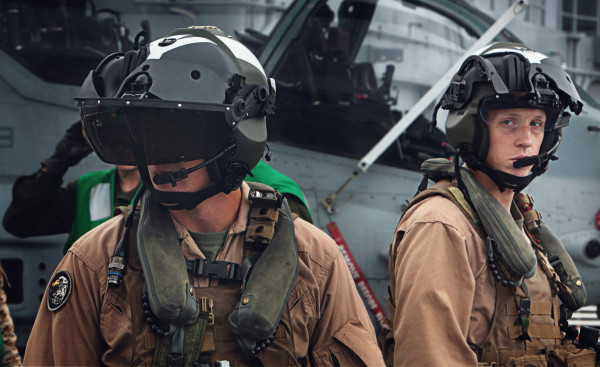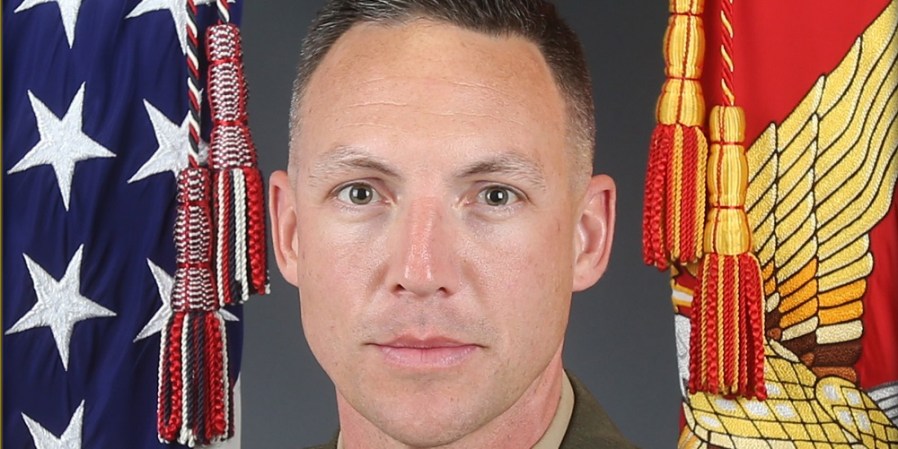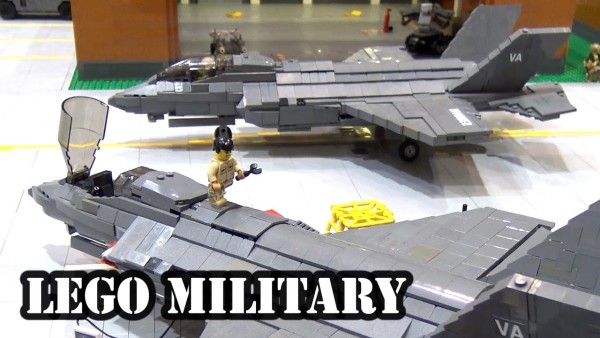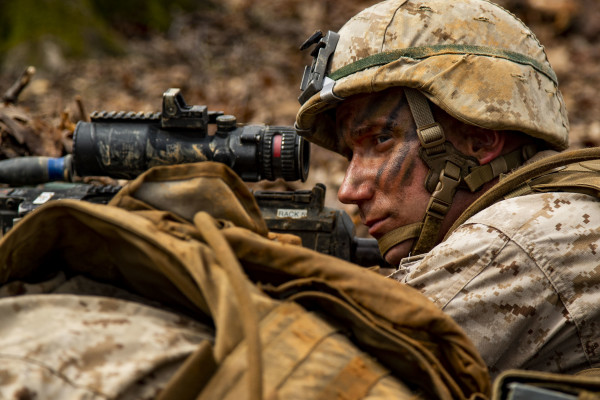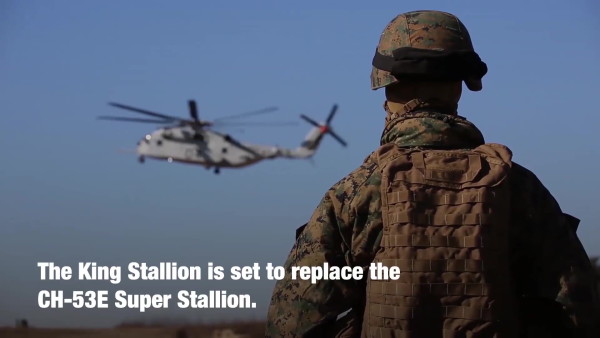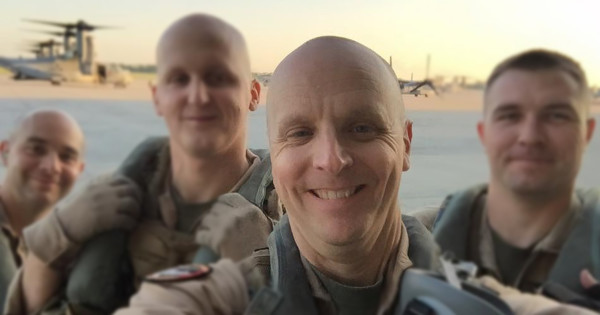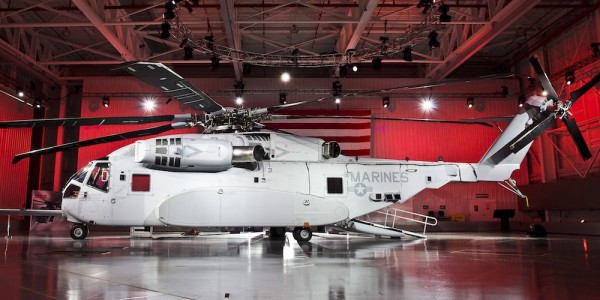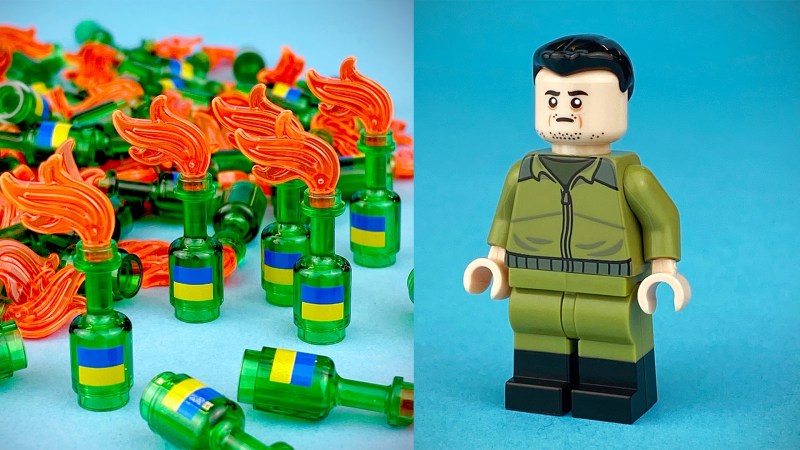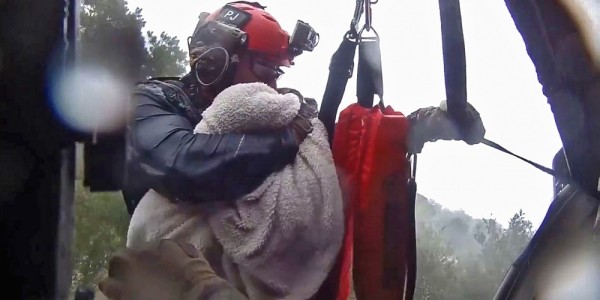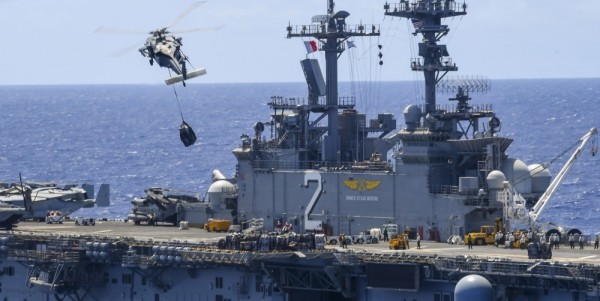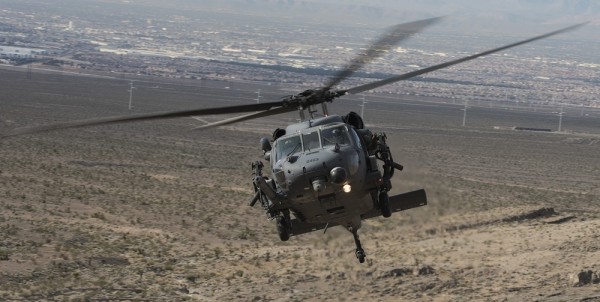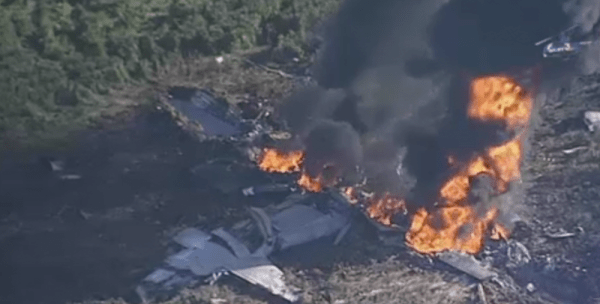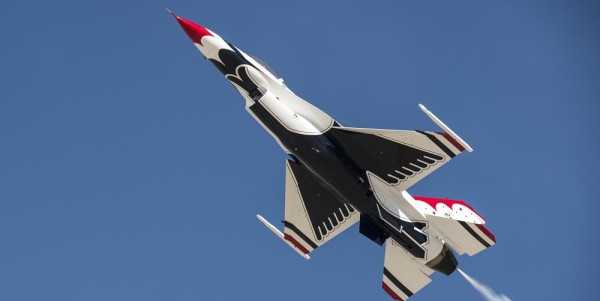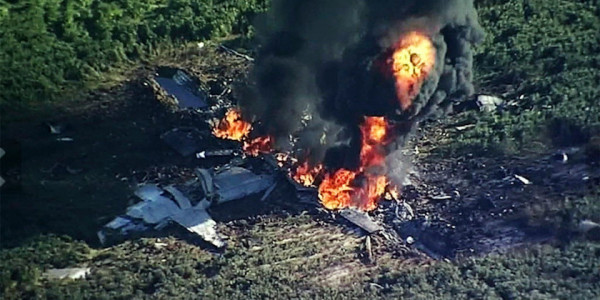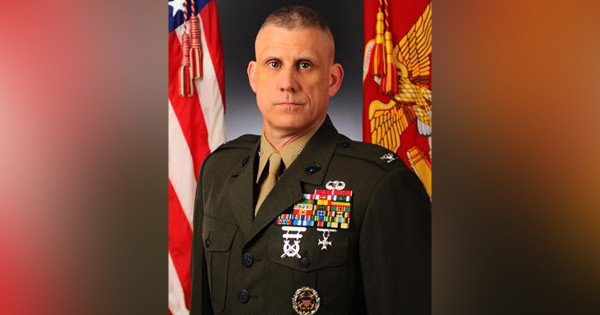The recent crash of a Marine Corps CH-53E Super Stallion helicopter that killed five Marines took place amid the ongoing stand down of all military V-22 Ospreys. The result, say Marine aviation experts, has almost certainly increased the usage of the aging CH-53E fleet.
The Marine Corps’ roughly 360 MV-22B Ospreys, along with the Navy and Air Force’s Ospreys, have been grounded since an Air Force version of the aircraft crashed in November, killing all eight crewmembers aboard.
The MV-22Bs have been a workhorse for the Marines since they replaced the Corps’ CH-46 Sea Knight helicopters, which were retired in 2015.
Marine Col. Matthew Danner, head of the 31st Marine Expeditionary Unit, told reporters in January that his unit had to rely more on older CH-53E Super Stallion heavy lift helicopters because the Corps’ Ospreys had been grounded.
“Between the other assault-support aircraft and surface connectors, I can still move the same number of things and people,” Danner said at the time. “What it really goes to is if I had to do that over the course of five days in a row, I would struggle to do that in ways that I wouldn’t if I had these 11 Ospreys.”
Subscribe to Task & Purpose today. Get the latest military news and culture in your inbox daily.
Marine Corps spokeswoman Capt. Alyssa Myers told Task & Purpose that the CH-53E is one of the alternatives that the Corps has been using to meet its operational needs while the MV-22Bs remain grounded.
The Marines have other aviation assets. The service flies both UH-1Y Venom helicopters and KC-130J fixed-wing aircraft, though both have significantly different roles and capabilities than the vertical heavy-lift Ospreys and Super Stallions. The Marines also have access to aircraft from other military branches, such as Navy SH-60 Seahawks, Army CH-47 Chinooks, and Army UH-60 Blackhawks, Myers said.
“When the MV-22 is not available, these highly capable aviation platforms provide transportation of equipment, supplies and personnel during ship-to-shore movement and operations,” Myer said.
However, the MV-22B Ospreys and CH-53Es do the bulk of cargo and troop transport for Marines at sea, said Richard Aboulafia, managing director of AeroDynamic Advisory, a consulting firm for the aerospace industry. Aboulafia noted that the Marines have very few UH-1Ys, and Army helicopters do not conduct maritime or shipborne operations.
“Removing V-22s from the list produces a tremendous level of reliance on one large, aging platform,” Aboulafia told Task & Purpose.

While the Marine Corps’ fleet of MV-22Bs are still grounded, “the missions don’t go away,” said retired Marine Col. Jay Frey, an aviation consultant.
If MV-22Bs are not available, a Marine Expeditionary Unit will fill the void with CH-53 helicopters along with UH-1Y Venoms and Navy SH-60 Seahawks, said Frey, who led Marine Unmanned Aerial Vehicle Squadron 3 and Expeditionary Warfare Training Group, Atlantic.
“The Hueys [UH-1Y], generally you only have three per MEU [Marine Expeditionary Unit]; so, they’re not going to be doing much,” Frey told Task & Purpose. “They really can’t lift a lot for what it takes to sustain a MEU. So, what they would be doing using the CH-53s more. They would be looking at opportunities – this is at sea – to use ship-to-shore connectors or LCACs [Landing Craft Air Cushions] more. You can’t say that the load didn’t go to somewhere else. It certainly did.”
The Marine Corps is in the process of replacing its CH-53E Super Stallions with newer CH-53K King Stallions, which entered service in 2022.
During last decade’s aviation crisis, CH-53E Super Stallions had the most serious readiness problems of all Marine Corps aircraft. More recently, a 2020 Government Accountability Office report found that the CH-53Es were one of 26 military aircraft that did not meet their mission capable goals from Fiscal Years 2011 to 2021.
“Mission capable rates” refers to how many aircraft can fly on a given day. Between 2009 and 2016, the overall mission-capable rates for CH-53Es fell from 63% to 28.5%.
As of Fiscal Year 2021, the average age of the Marine Corps’ CH-53E helicopters was 32.7 years old, and it cost about $1.14 billion to support and operate the aircraft, an 11% increase over the past two years, according to the GAO report.
The Marine Corps began a program in 2016 to restore and refurbish its CH-53Es, which had been heavily used during 11 years of war and had little time to undergo significant repairs at a depot, the report found. But the helicopters took longer than expected to undergo depot maintenance due to excess corrosion and unanticipated repairs, which lengthened the average time needed to refurbish the aircraft in Fiscal Year 2021 from 271 to 344 days.
The grounding of all V-22 Ospreys has affected the other services as well. The Navy, for example, had to reassemble crews for its C-2 Greyhounds, which it is in the process of retiring, said J.J. Gertler, a senior analyst with the Teal Group, an aerospace and defense market analysis firm.
“They weren’t all retired yet, but the pilots had, in some cases, moved to other assignments,” Gertler told Task & Purpose. “That whole fleet had to be reassembled in a hurry.”
The Air Force is also conducting more missions with helicopters, but the service is also operating on the hope that its CV-22s will return to service soon, Gertler said.
The Osprey grounding has been particularly hard for the Marine Corps because they have fewer aircraft than the other services to backfill their MV-22s, he said.
“Marines, to a greater extent than the other services, don’t have the opportunity to say, ‘You know, we won’t do that mission today,’” Gertler said.
The latest on Task & Purpose
- Army officer gets reprimand for secret camera in dressing room
- Two Army Rangers made the bracelet Taylor Swift wore at AFC Championship game
- 5 Marines who died in CH-53E helicopter crash identified
- Police find rocket from nuclear missile in Washington home
- Army orders hundreds of counter-drone Coyote munitions amid attacks on US bases

